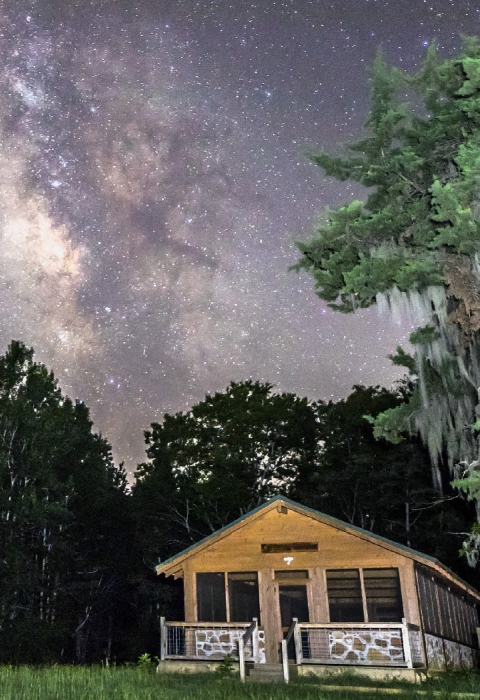What We Do
The National Wildlife Refuge System is a series of lands and waters owned and managed by the U.S. Fish and Wildlife Service. Wildlife conservation is at the heart of the refuge system. It drives everything we do from the purpose a refuge is established, to the recreational activities offered there, to the resource management tools we use. Selecting the right tools helps us ensure the survival of local plants and animals and helps fulfill the purpose of the refuge.
Management and Conservation
Refuges use a wide range of land management tools based on the best science available. Some refuges use prescribed fires to mimic natural fires that would have cleared old vegetation from the land helping native plants regenerate and local wildlife to thrive. Other refuges contain Wilderness areas where land is largely managed passively. The management tools used are aimed at ensuring a balanced conservation approach where both wildlife and people will benefit.
Historically, the upland portions of the refuge were East Texas pineywoods that consisted of shortleaf pine and hardwoods such as southern red oak, post oak, white oak, mockernut hickory, white ash and other fire tolerant species. Wildfire was a frequent occurrence prior to European settlement. The Army reforested much of the open upland ground with loblolly pine. Our objective is to return the upland pineywoods on the refuge back to a fire tolerant pine savannah forest. The bottomland hardwood forest on the refuge was mostly undisturbed during the Army activities and is considered one of the best bottomland forests in Texas.
Refuge staff are actively thinning around 500 acres per year and burning around 1,800 acres per year. The goal is to transition from a loblolly pine dominated forest that has a dense woody understory to a shortleaf pine dominated forest with an open grassy understory. Within 20 to 30 years, we hope this system will have returned to the state it was in before human settlement.
Another refuge management effort is to protect and restore habitat for bird species such as the red-headed woodpecker, eastern wood-pewee, loggerhead shrike, brown-headed nuthatch and Bachman’s sparrow. Red-cockaded woodpeckers are also known to use the open pine forest.
The refuge is ensuring the succession of the old growth forest in the 1,000 acres of mature bottomland hardwood forests. This allows the development of large trees and other native trees and shrubs that support species such as Acadian flycatcher, warblers, pileated woodpecker, red-shouldered hawk and white-eyed vireo.
Trapping is a wildlife management tool used on some national wildlife refuges. Trapping may be used to protect endangered and threatened species or migratory birds or to control certain wildlife populations. The U.S. Fish and Wildlife Service also views trapping as a legitimate recreational and economic activity when there are harvestable surpluses of fur-bearing mammals. Outside of Alaska, refuges that permit trapping as a recreational use may require trappers to obtain a refuge special use permit. Signs are posted on refuges where trapping occurs. Contact the refuge manager for specific regulations.
Law Enforcement
U.S. Fish and Wildlife Service law enforcement officers have a wide variety of duties and responsibilities. Officers help visitors understand and obey wildlife protection laws. They work closely with state and local government offices to enforce federal, state and refuge hunting regulations that protect migratory birds and other game species from illegal take and preserve legitimate hunting opportunities.
